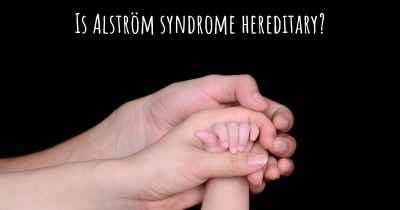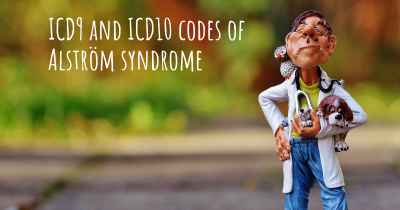What is the history of Alström syndrome?
When was Alström syndrome discovered? What is the story of this discovery? Was it coincidence or not?

Alström syndrome is a rare genetic disorder that was first described in the medical literature in 1959 by Carl-Henry Alström, a Swedish pediatrician. The syndrome is named after him in recognition of his significant contribution to understanding and characterizing the condition.
Dr. Alström initially encountered a family with several children who exhibited similar symptoms, including obesity, vision and hearing impairments, and endocrine abnormalities. Intrigued by this pattern, he conducted further investigations and identified additional cases with similar clinical features.
Over the years, more cases of Alström syndrome were reported, and researchers began to recognize the distinct set of symptoms associated with the condition. The syndrome is characterized by a wide range of clinical manifestations, affecting multiple organ systems.
Genetic studies played a crucial role in unraveling the underlying cause of Alström syndrome. In the late 1990s, researchers identified mutations in the ALMS1 gene as the primary genetic cause of the syndrome. The ALMS1 gene provides instructions for producing a protein that is involved in various cellular processes, although its exact function is not yet fully understood.
Since the discovery of the ALMS1 gene, numerous mutations have been identified in individuals with Alström syndrome. These mutations can disrupt the normal functioning of cells and lead to the wide range of symptoms observed in affected individuals.
Clinical features of Alström syndrome typically manifest during infancy or early childhood. One of the most prominent features is early-onset obesity, which often begins in the first year of life. This excessive weight gain is usually accompanied by insulin resistance and can lead to the development of type 2 diabetes in adolescence or early adulthood.
Visual and auditory impairments are also common in individuals with Alström syndrome. Vision problems, such as cone-rod dystrophy, can cause progressive loss of visual acuity and color vision. Hearing loss, often starting with high-frequency sounds, may require the use of hearing aids or cochlear implants.
Furthermore, Alström syndrome affects various endocrine organs, leading to endocrine abnormalities. These may include hypothyroidism, hypogonadism, and abnormalities in the production of certain hormones. Additionally, individuals with Alström syndrome may experience liver and kidney dysfunction, respiratory difficulties, and cardiomyopathy.
Diagnosis of Alström syndrome is based on clinical evaluation, genetic testing, and the presence of characteristic symptoms. Due to the rarity of the condition and its diverse manifestations, diagnosis can be challenging and often requires a multidisciplinary approach involving specialists from various medical fields.
Treatment for Alström syndrome is primarily focused on managing the individual symptoms and complications associated with the disorder. This may involve a combination of medical interventions, such as dietary modifications, insulin therapy for diabetes, hormone replacement therapy, and supportive care for visual and auditory impairments.
Research into Alström syndrome is ongoing, aiming to further understand the underlying mechanisms of the disorder and develop potential targeted therapies. The rarity of the condition poses challenges in conducting large-scale clinical trials, but collaborative efforts among researchers and healthcare professionals continue to advance knowledge and improve patient care.
In conclusion, Alström syndrome was first described by Carl-Henry Alström in 1959, and subsequent genetic studies have identified mutations in the ALMS1 gene as the primary cause of the syndrome. The condition is characterized by a wide range of symptoms affecting multiple organ systems, including obesity, vision and hearing impairments, and endocrine abnormalities. Diagnosis can be challenging, and treatment primarily focuses on managing individual symptoms. Ongoing research aims to deepen our understanding of Alström syndrome and develop more effective therapeutic approaches.








